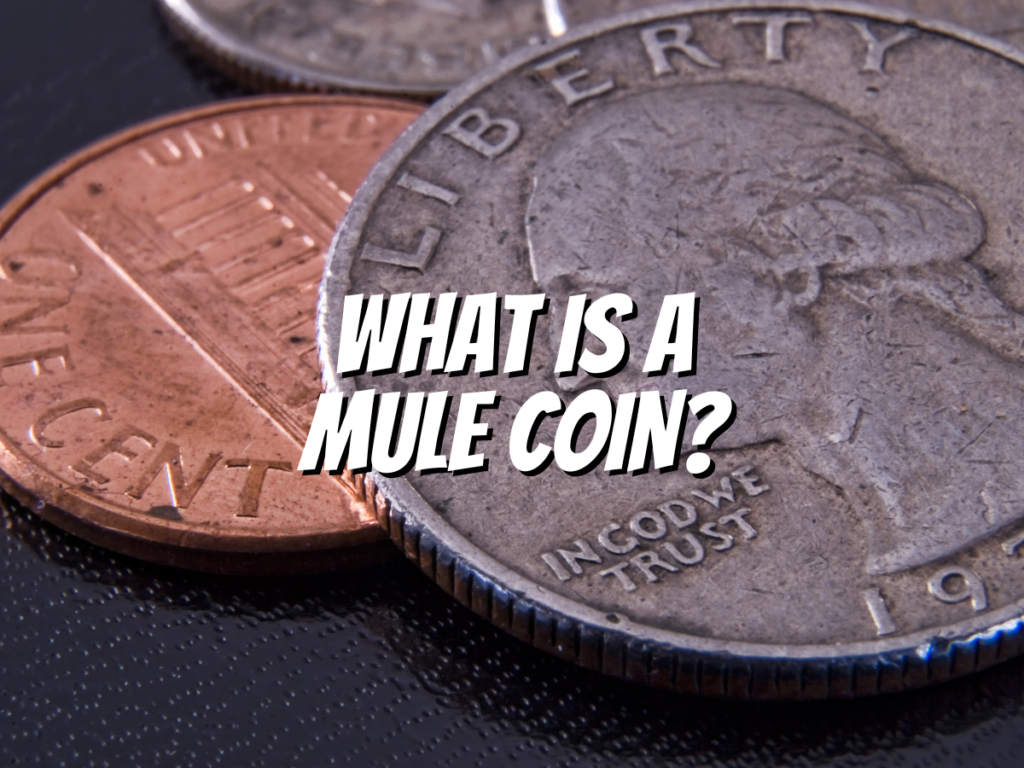In numismatics, a mule refers to a coin or medal with obverse and reverse designs that are not typically found on the same piece.
These can be intentional or produced by error. Collectors highly seek this type of error, which can fetch high prices.
In this article, we’ll discuss what is a mule coin and if it’s valuable!
What Is a Mule Coin?

A mule is a type of error coin. The coin has a design on the head’s side and a design on the tail’s side that wouldn’t typically be seen together.
Mule error coins are quite fascinating pieces. The name is derived from the offspring of a donkey and a horse.
blending of two distinctly different species, this creation is commonly used as a working animal.
Mule coins, my friends, are not exactly what you would call beasts of burden.
However, they do bear a striking resemblance to the mule of the animal kingdom. They are made up of two coins you wouldn’t normally find together.
Mule coins are rare, whether accidentally struck or intentionally made. Coin collectors have long been interested in mule error coins. Many error coin collectors have these coins high on their want lists!
The Mule: A Brief History.
These coins were first discovered in the early 2000s, and let me tell you, they were given the nickname “mules” pretty darn fast because of how unusual they were.
That’s right, folks! Mules, as commonly referred to, are coins that have strayed from the usual production process of both their front and back dies.
You can observe this deviation on various coins, such as images with errors or peculiarities like double-die errors, with multiple images on each side.
Typically, mule errors are caused by human error during production at the mint or by private collectors who have accidentally mixed up two different types of coinage while collecting them together into one bag full of change.
Mules, my friends, are created unintentionally and are not meant for release.
However, others find these coins intriguing enough to gather them as one-of-a-kind items. Well, you see, mules are quite common in the coin-minting process.
It happens when two dies become stuck together during production, making it difficult to determine if they were meant to be used together. Even with modern technology, mistakes can still occur when making coins, so sometimes, these mules are intentionally created.
Well, you see, mules are considered errors since they weren’t meant to exist in the first place. But, interestingly enough, they’re unique, and collectors tend to go to great lengths to acquire them regardless!
The Mule Coin Becomes a Merchandiser Darling.

Mule coins make for great conversation pieces. People often use them to entertain their guests or display their wealth and expertise in historical artifacts. These can also be used as gifts.
Mule coins make for an excellent present for fellow collectors since they are errors, and coin errors are something that collectors tend to appreciate. Furthermore, these types of coins are worth collecting because they are unique!
So, there’s this mule coin collector I know who gave one of his coins away as a gift. He then had a friend take pictures of him with the coin in front of the White House!
And you can even use them to create collectibles such as jewelry or collectible pins, similar to those commemorative coins released annually.
Before you go…
We hope this brief history of the mule coin has been enlightening. We also hope it has inspired you to seek out your collection of these unique coins and start your journey into numismatics! Remember always to check our website for new articles! Happy collecting!
Check out my next article: “How Do You Tell if a Coin is Mule?“
Related Articles:

